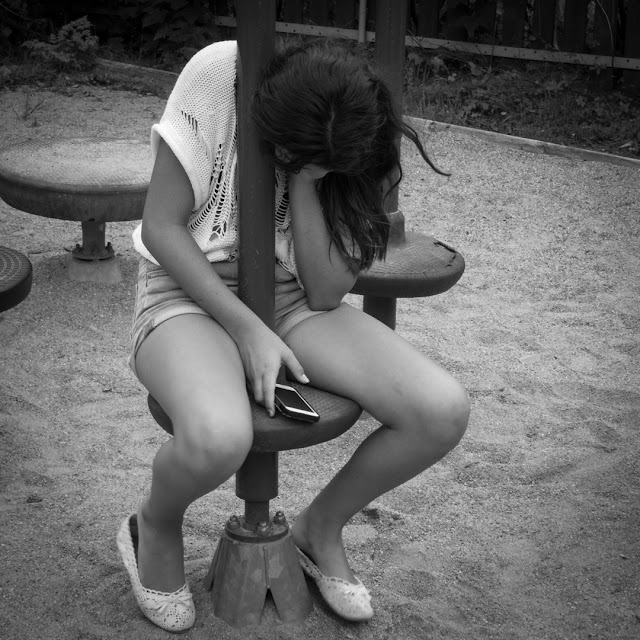You can
shoot street photography with any camera ever made, which is one of the great things
about street photography. I prefer to shoot with small black cameras that are stealthy
because I want to be as invisible as possible. A black shirt also helps to make
the camera even more hidden. The most important thing when it comes to gear
when shooting street photography is to know your camera. Street photography is
nothing different from anything else, you have to practice shooting with your
camera and know how to use it. I have used my Fujifilm X100 for about a year now, and
I still don’t fully master it.
As of today camera phones have become more popular and the cameras in the phones are now
something we take for granted and something we always have with us. The quality
of the camera phones are not much to write home about, the fact is they are
quite useless. The only time you might pull it off is if the scene is very well
lit.
But the fact
is that there is only one camera phone worth talking about when it comes to a quality
camera phone and that is Nokia’s pureview technology with the 41 mega pixel sensor.
No other camera phone come close to this technology, Samsung, Apple, HTC, LG,
Sony and others are years behind in this respect. Nokia's latest output with
this technology is the Lumia 1020, that sports a 41 Mega pixel 1/1.5” (2/3”)
sensor. The sensor size in modern ultra-compact cameras range from 1/2.3” to 1”
and my Canon Power Shot S100 has a smaller sensor with its 1/1.7” sized sensor.
Nokia’s sensor is the same size as the one found in the Fujifilm X20. The only
one that is bigger is Sony’s RX100 cameras that have the 1” sensor. Nokia’s
first pure view camera phone, the Nokia 808 had an even bigger sensor at 1/1.2”,
not much smaller than the one found in Sony’s RX100 lineup.
Even if the
Lumia 1020 is taking the camera phone technology to new levels it still has a
long way to go to real compact cameras with larger sensors and better optics
(such as the Sony RX100, Micro 4/3 systems and the Fujifilm X-series). The biggest problem for me with camera phones
and other ultra-compact cameras is the lack of a raw shooting mode. The cameras
are simply processing and saving your images into the JPEG file format, and the
most cameras are NOT doing this job very well. The fact is that the JPEG’s from
many cameras are really bad, the lack of detail is obvious when you zoom into
your pictures, the JPEG file is just a smear and your fine details are gone forever.
The
solution to this problem is to always shoot in raw format. I always shoot in raw format, except when I am using my Samsung Galaxy Note, because it only saves
images in JPEG format. So the next big step for camera phone makers must be to
incorporate the ability to shoot in raw format. The JPEG image format is a destructive
one, every time you save a JPEG it will throw away data from your image and you
will lose image quality for each time you save your picture. So if you do any
editing to your image you will end up losing quality. Some people may add some effect or filter
to their image and then it is saved to a new JPEG file and your image is again
degraded. After you are done editing
your JPEG you might want to upload it to a photo sharing site on the
Internet. When you upload your image to
the image sharing site it will be saved as a JPEG using different
algorithms at the specific site, and the result is an even more degraded image.
Now there is different quality loss at different Internet sites. The worst of
all is Facebook, your pictures are literary killed when you upload them to
Facebook. There are artifacts all over the place and the image is almost completely
destroyed, I rarely upload images to Facebook, I rather link to other photo
sharing sites that let you display your images at higher quality.
The best
photo sharing site in my opinion is flickr (http://www.flickr.com/photos/koxa74/),
which allows you to show your images with acceptable image quality. I would
like a photo sharing site where you can show your image as you saved it (only
saved one time to JPEG straight from the raw file). Google + is somewhat in between flickr and
Facebook in image quality, so I prefer flickr as my main photo site on the net.
This image was made with my Samsung Galaxy Note. Street photography with a camera phone is possible, but you will need a well lit scene to pull it off.

